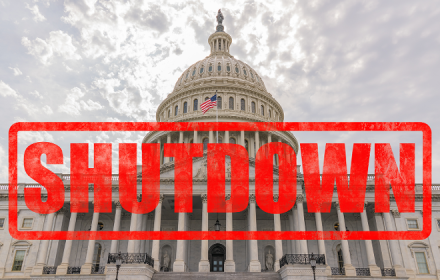Secure storage of cryptocurrencies in 2025 is shaping a new standard for protecting digital assets. Chainalysis statistics indicate over $3.8 billion lost in 2022-2024 due to attacks and user errors.
Every major player is strengthening control over assets: exchanges are implementing multi-level authentication, hardware solutions are becoming the norm even for individual investors, and KYC requirements are becoming stricter. Losing a seed phrase or carelessly connecting to suspicious dApps can cost more than any fee.
Secure Cryptocurrency Storage in 2025: Hot and Cold Wallets
A hot wallet is connected to the network, convenient for trading and working with DeFi, but vulnerable to hacking. Cold storage isolates the key from the internet, turning the device into an impenetrable safe. Ledger Nano X or Trezor Model T use military-grade encryption.
For example, an investor stored Bitcoin and Ether on the exchange wallet Binance and fell victim to a phishing attack, resulting in asset loss. Transferring funds to a hardware wallet minimizes risks. Secure cryptocurrency storage in 2025 requires regular checking of connections to dApps and caution when using MetaMask.
Custodial and Non-Custodial Wallets
Custodial and non-custodial wallets affect the level of independence. Custodial solutions on platforms like Bybit or Binance provide quick access to liquidity but transfer control to a third party. Non-custodial wallets restore full autonomy: the seed phrase is only stored by the owner.
For instance, during the FTX exchange outage in 2022, clients lost billions precisely due to the custodial format. In 2025, without secure cryptocurrency storage, such errors come at an even higher cost: regulators tighten rules, and cybercriminals use complex attack schemes.
How to Protect Your Crypto Wallet: Specific Steps
Crypto security requires a systematic approach. Hardware wallets like Ledger or Trezor protect the key even if the PC is infected with a virus. Two-factor authentication and unique passwords reduce theft risks. Regular software updates patch vulnerabilities. Verifying addresses during transfers prevents data tampering through malware. Reliable cryptocurrency protection involves controlling the seed phrase: writing it on a physical medium, storing it in multiple secure locations, but never photographing or transmitting it over the internet.
Specific actions for protection:
- Use a hardware wallet like Ledger or Trezor for cold storage.
- Verify URLs and KYC procedures before accessing exchanges like Binance or Bybit.
- Create unique complex passwords, change them every 90 days.
- Isolate the seed phrase from the network, store copies in different secure locations.
- Connect a hot wallet only to verified dApps and DeFi platforms.
- Monitor wallet activity through analytical services to quickly respond to suspicious transactions.
- Use VPN and traffic encryption when working with cryptocurrency.
These measures create a strong barrier against phishing, malicious dApps, and wallet hacking attempts. Continuous activity monitoring and discipline in network operations ensure long-term security of cryptocurrency assets.
Protecting Bitcoin and Ether from Modern Threats
Protecting Bitcoin and Ether in 2025 is demonstrated by examples of attacks on DeFi projects, where hackers exploit vulnerabilities in smart contracts. Secure practices minimize the use of hot wallets for large transfers. Experienced traders store their primary cryptocurrency in a cold wallet, connecting it to the network only for transactions.
For instance, during the 2024 hack of a dApps platform, a trader using a hardware wallet preserved assets, while others lost over $200 million.
Exchange Storage vs. Full Autonomy
Exchange formats are convenient for quick exchanges, but risks increase each year. Binance and Bybit have enhanced security systems, implemented multi-level protection, but completely eliminating hacking is impossible. Reliable cryptocurrency protection requires balancing between liquidity access and autonomy. A hardware wallet provides independence, while custodial wallets offer simplicity but with a loss of control.
Cold Storage as the Gold Standard
Cold storage uses devices not constantly connected to the network. Ledger and Trezor keep keys encrypted, not transmitting them to servers. The seed phrase is the sole access to assets: its loss leads to complete fund loss. Reliable storage methods revolve around the principle of not trusting third parties and not keeping large sums in hot wallets. For example, an investor with $500,000 distributed assets across several hardware wallets and avoided losses during an exchange hack.
Future: KYC Standards and DeFi Integration
Regulators demand strict KYC, and DeFi platforms integrate additional layers of protection. MetaMask introduces updates that warn about dangerous dApps. Security becomes part of the general financial culture: investors study protocols, test smart contracts, check permissions before connecting wallets. In 2025, over 70% of users choose non-custodial solutions to retain control over assets.
Secure Cryptocurrency Storage in 2025: Conclusions
Secure cryptocurrency storage in 2025 forms a habit of acting consciously: using hardware wallets, verifying each connection, controlling seed phrases, avoiding hot wallets for large sums. The strategy for protecting digital assets defines financial stability and ensures that Bitcoin, Ether, and other assets will withstand any market turmoil.
 en
en  ru
ru  de
de  ar
ar  es
es  hi
hi  fr
fr  nl
nl  it
it  pt
pt  el
el 



